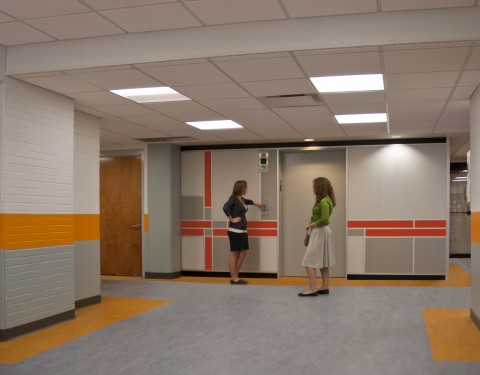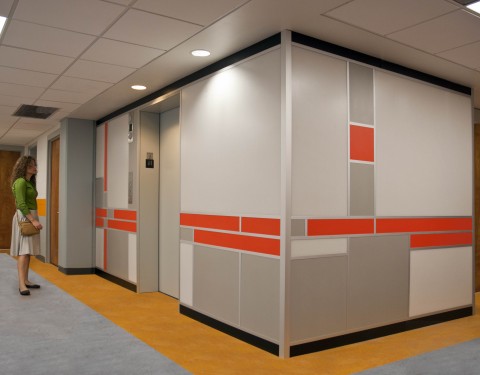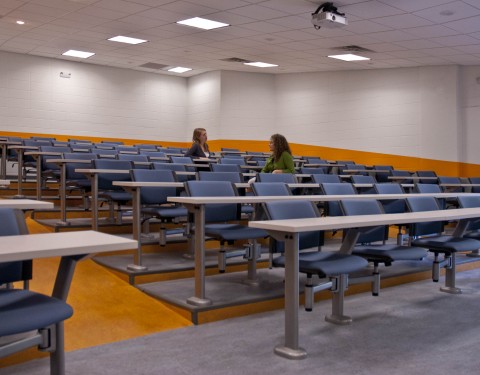WILLIAM PATERSON UNIVERSITY, RAUBINGER HALL
WILLIAM PATERSON UNIVERSITY, RAUBINGER HALL LOBBY AND LECTURE HALLS
WAYNE, NEW JERSEY
An interior renovation of two lecture halls and a lobby space within Raubinger Hall at William Paterson University in Wayne, NJ. The design process focused on several new trends in educational design:
Going beyond ‘green’
There is a focus on sustainability, not only in terms of ‘green’ materials, but in terms of creating a highly functional interior that will serve its intended purpose and contribute to its users’ sense of wellbeing.
- Flexible, swing away seating is responsive to small adjustments in posture and position. By adapting to varied users and maximizing comfort level, this seating modality contributes to better student focus and longer attention spans.
- Integrated lighting and audio-visual controls provide the ability to dim lights, lower projection screens and operate computer aided presentations with the touch of a button on the front podium. The system affords the instructor central and intuitive control over their interior environment, maximizing the comfort level for users, the functionality of the space for learning, and energy economy for the university.
Color, color, color
Peter Johnston Architect applied bold, bright color to facilitate learning and active thought on the part of students. Studying and implementing comprehensive color theory allowed the firm to create an engaging environment for learning. These bold color statements found a home within a neutral palette of cool greys and blues, keeping them from overwhelming the space.
Sustainable Materials
In an interior space, particularly in ones with limited access to natural daylight and ventilation, indoor air quality has a direct and marked influence on student success. With that in mind, Peter Johnston Architect utilized finishes and materials with as little negative environmental impact as possible. Materials include:
- Smart certified natural linoleum flooring material
- Greenguard certified upholstery
- Low VOC paints and adhesives
- 80% recycled content acoustical ceiling tiles
This project was featured in Interiors & Sources Magazine.





